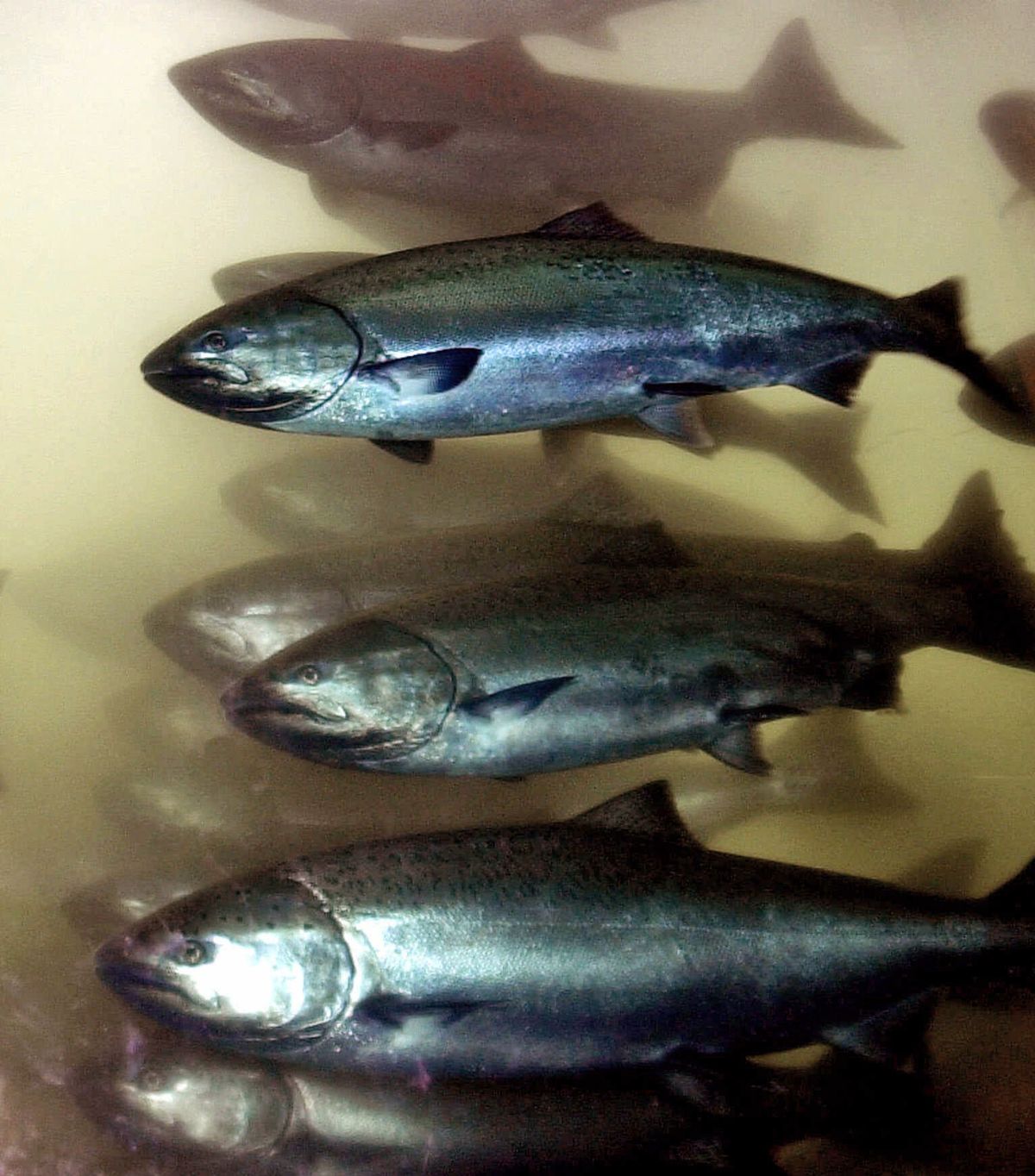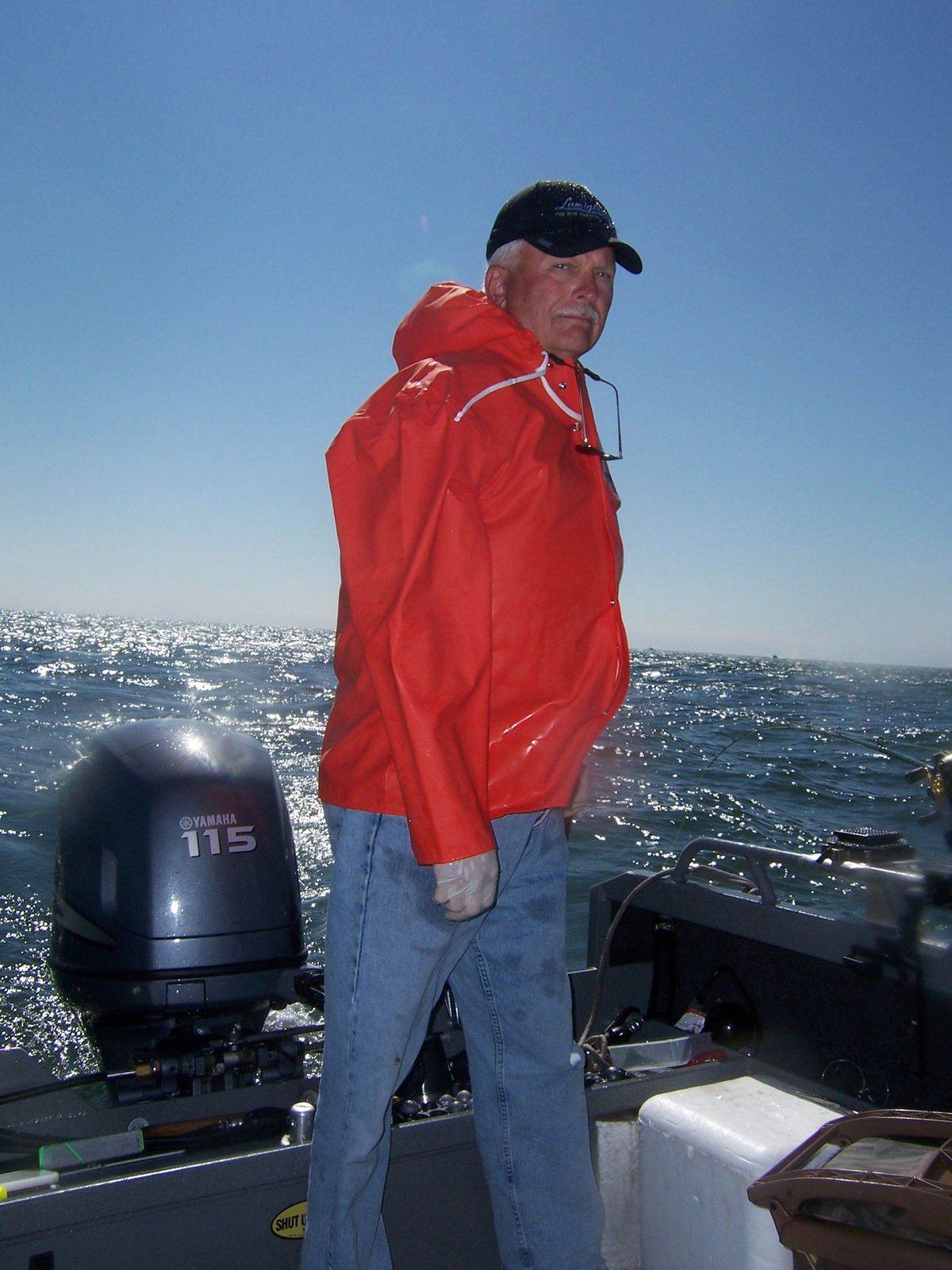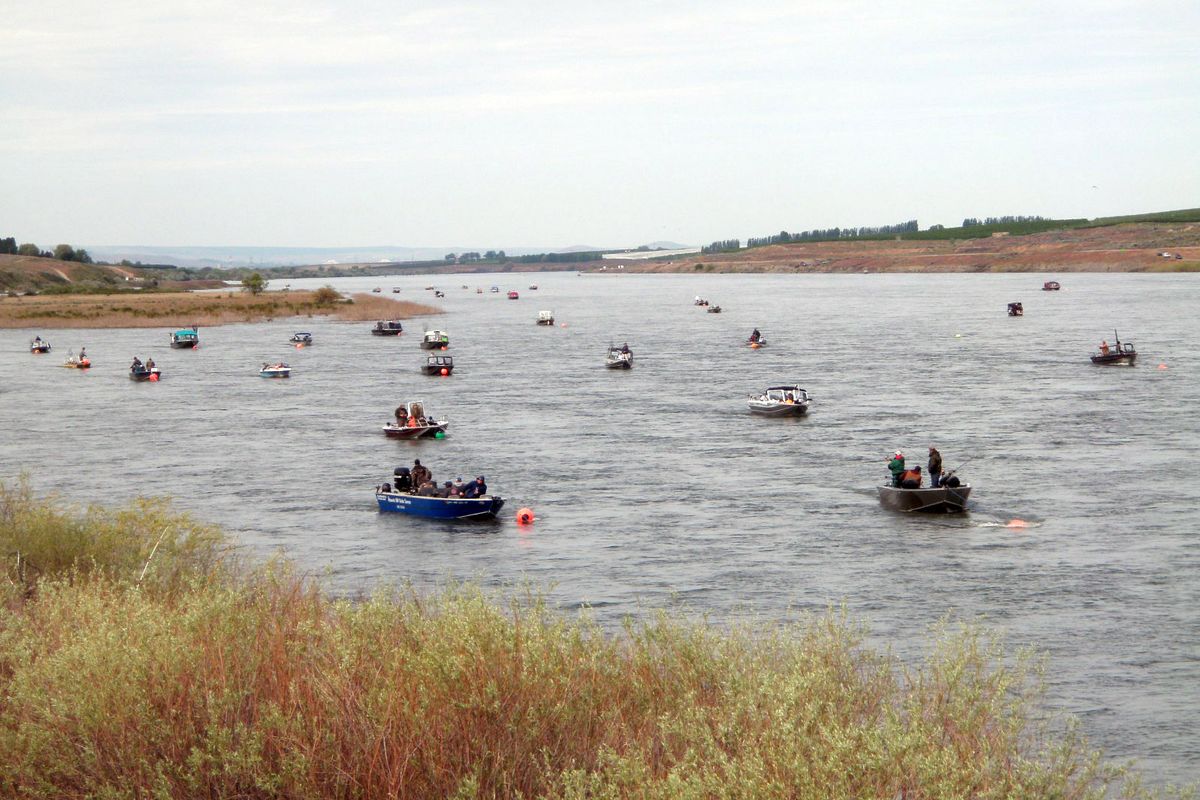East Side anglers lobby for higher Snake River chinook quotas
Boaters anchor downstream of Ice Harbor Dam. Snake River anglers caught more than 2,300 spring chinook in 2012.
Often shorted their share of spring chinook, anglers east of the Cascades want a dialog with Washington, Oregon and Idaho during 2013 leading to a better fishery in the Snake River.
And they’re going to get it, with discussions tentatively planned this summer and fall with an eye toward potential changes in time for spring salmon fishing in 2014.
Mike Bireley of College Place, a Walla Walla suburb, is executive director of the Tri-State Steelheaders and a member of the Washington-Oregon Columbia River Recreational Fishery Advisor Group.
He’s met with the leadership of the Washington Department of Fish and Wildlife on multiple occasions this year to talk about sport fishing in the lower Snake River.
In a nutshell, here’s his message: Sportsmen upstream of Bonneville Dam are allocated only 25 percent of the spring chinook, and yet in the lower Snake River fishing frequently has closed before the allocation is reached.
Like anything dealing with the Columbia River salmon, there are lots of numbers involved.
In 2005-2009, anglers upstream of McNary Dam averaged catching less than 30 percent of their spring chinook allocation. But, under buffers applied starting in 2010, the anglers upstream of McNary have caught 97 percent, 193 percent and 212 percent of their spring chinook shares.
Anglers in the lower Snake have learned how to catch spring chinook.
“We can catch a lot of them real fast,” Bireley told the Columbia River recreational advisory group in January. “We’ve only seen that evolve in the last three or four years. I think a lot of that lesson has come from guides that fish in Idaho on the Clearwater, upper Snake and Salmon, plus from the lower river. … Anglers around the Snake have adopted them and we’ve developed the ability to catch a lot of fish in a hurry.”
Bireley tells about a sporting goods store in the tiny Columbia County community of Starbuck, near Little Goose Dam on the lower Snake. Monthly sales are about $3,000 unless there is spring chinook fishing open in May, when they skyrocket to $30,000.
Spring chinook fishing was good in 2011 and 2012, years with very high water and prolonged cold temperatures.
“What we’ve observed is that it had a negative impact on your (lower Columbia) harvest, but it enhanced ours,” he said.
It was 2008 when the current share of 75 percent of the sport allocation to the lower Columbia was set. Bireley said he’d like to start with the Snake River consistently getting its existing allocation.
“We are not interested in getting in a fish fight with lower-river interests,” Bireley said. “We are very interested in sitting down and working with people to see if we can figure out what it is that’s consistently revoking our ability to meet our allotment.”
Bireley called a fish fight with the lower Columbia a “zero sum gain.”
“In order for one to gain, someone has to lose.”
Many millions of dollars have been spent in Southeast Washington to restore habitat to produce naturally spawning fish, he said. The Tucannon River is due $9 million in the next eight years. Spring chinook are being reintroduced into the Walla Walla River and considered for the Touchet River, he added.
“A lot of people have made sacrifices,” Bireley said. “They want to know those sacrifices get us equal consideration when it comes to the benefits of having viable fisheries.”
One concern is that lower Columbia River fishing seasons in March and early April are hurting Eastern Washington and Idaho.
“There are serious concerns that the earliest returning springers are being harvested and that is affecting the genetics and timing of the run,” Bireley said.
Pete Hassemer, anadromous fish manager of the Idaho Department of Fish and Game, shared the concern about lower Columbia anglers catching a high number of early-returning Idaho spring chinook.
Hassemer said he realizes the lower Columbia, Columbia Gorge and lower Snake River will get their allowed harvests. “What we look at is the composition of the catch,” he said. “Our objective is to spread catch across all the stocks that are coming up.”
Guy Norman, Southwest Washington regional director for the Department of Fish and Wildlife, it’s clear the Snake River anglers can catch spring chinook.
“Now all of the fishing areas, above and below (Bonneville) have in common the ability to harvest the quota quickly once the fish arrive in large numbers,” he said.
Norman and Steve Williams, an assistant administrator for fisheries for the Oregon Department of Fish and Wildlife, agreed it is time to revisit spring chinook management.
Williams said anglers on the Oregon side of the Columbia River Gorge share the same concerns as the Snake River fishermen. He also mentioned bringing summer chinook and sockeye issues to the table.
Norman said he envisions a process in summer and fall involving representatives of the lower Columbia, Columbia Gorge and Snake River. If summer chinook and sockeye are added, representation from the upper Columbia will be needed, too.
The new lower Columbia River reforms take additional spring chinook allocation from the commercial fishery and move it to the sport side. As part of those lower Columbia reforms, the Washington and Oregon fish and wildlife commissions want annual updates.
Norman said he is not pre-supposing a shift in the sport allocation from the lower Columbia up the watershed, But, the discussion among the regional interests should be concluded before planning the 2014 fisheries, he added.
“I think the time is right,” Norman said. “We haven’t had the conversation for five years.”


